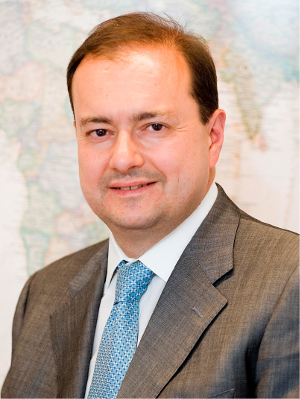AKIPRESS.COM -  The economic situation dogging Europe and Central Asia has entered its third year. The region's gross domestic product is expected to rise just 2.4 percent in 2014, roughly a third of what it was in the heady days of 2011.
The economic situation dogging Europe and Central Asia has entered its third year. The region's gross domestic product is expected to rise just 2.4 percent in 2014, roughly a third of what it was in the heady days of 2011.
What can countries do to recapture their economic strength?
By Dimitris Tsitsiragos, Vice President at the International Finance Corporation (IFC)
September 21, 2014
One answer lies in supporting small and medium enterprises (SMEs) run by women. There are nearly 1.3 million across Europe and Central Asia, according to a recent IFC study on financing for women entrepreneurs. They account for more than 40 percent of the region’s SMEs, and are thus a crucial part of every regional economy.
Despite the region’s attention to gender equality, long-standing issues like a lack of collateral and limited access to business training mean that female business owners struggle to get loans and other forms of financing, especially when compared to their male counterparts.
Most women-owned businesses face their greatest financing hurdles early on, during the crucial start-up period. As a result, the credit gap for smaller women-owned firms is 60 percent larger than the gap for smaller male-owned firms, according to the IFC study.
In ECA, female-run firms need an average of $86,000 more in financing than they are getting. That translates into a region-wide credit gap of $66 billion.
This is keeping women’s economic participation low and their economic potential untapped (compare ECA, where 36 percent of businesses are owned by women, to East Asia, where the total is 60 percent, according to the World Bank’s Enterprise Survey). Without proper cash flow, hundreds of thousands of women-owned ECA firms are unable to survive, expand, and create the jobs that are so crucial for economic growth.
The problem is especially acute in the biggest economies. In Russia, some two-thirds of women entrepreneurs are inadequately serviced by banks, with a credit gap of $11.5 billion. In Turkey, women-owned businesses represent 40 percent of SMEs, but only 15 percent have access to finance.
There are many reasons for the shortfall. Some banks view women as risky investments, even though women and men have similar repayment rates. Females usually lack the collateral, like land, necessary to get a loan. Finally, women often have less formal business training than their male counterparts and aren't aware of the support that is out there.
These are all hurdles that can be overcome. IFC and other international financial institutions hope to level the playing field, by helping banks create loan products catered to female entrepreneurs, which represent a potential lending market of $20 billion in ECA, according to the recent IFC study, and working with governments to reform lending laws, which would allow women to use office equipment, for example, as collateral for loans.
Technology can play a key role in expanding financial inclusion. Mobile banking, electronic payments, and related services can significantly boost reach and ease of use, particularly to the poor and less experienced – categories that often include women.
As the financial crisis continues to squeeze profit margins, banks have begun to look beyond their traditional client base to new markets. The business case for investing in women entrepreneurship and leadership has never been clearer.
Studies suggest that organizations that most include women in top management achieve more than a third better returns than their competitors. A recent report from IFC and Garanti Bank showed that women-founded startups were up to 25 percent more profitable than those founded by men. And right now, women are launching businesses at a greater rate than men.
The International Labour Organization (ILO) estimates that of the 865 million women worldwide who have the potential to contribute more fully to their national economies, 812 million live in emerging and developing nations. With the challenges the region is facing, real economic opportunity lies in tapping the sizable pool of female leadership and entrepreneurial potential across Europe and Central Asia.
